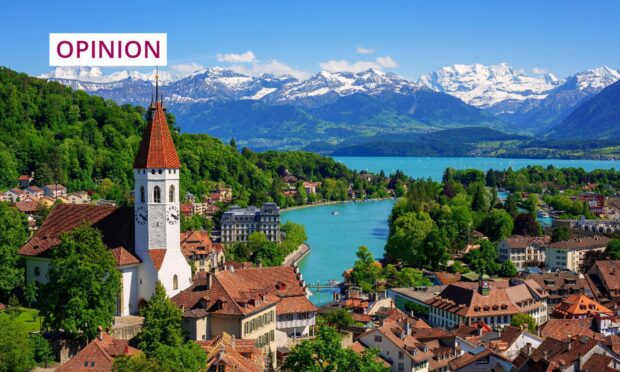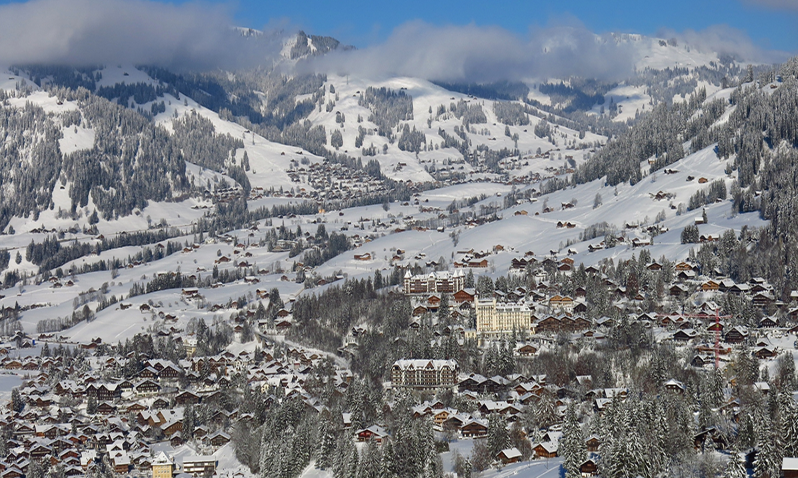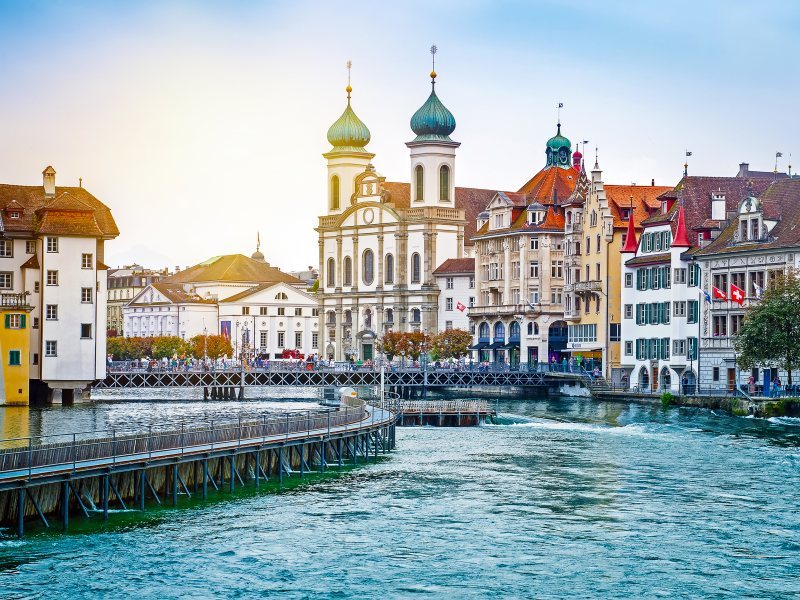Raised in Inverness and with the Highlands of Scotland on my doorstep, things like lochs and mountains were ever present. Five minutes in the car and there you were – in the wilds.
Your eyes absorb but are so used to the wood that they don’t see the trees. I thought I knew all about hills and lakes – until I discovered Switzerland.
The reason for going to live there is a tall tale for another day, but I emigrated for several fascinating and lucrative years in the 1990s, and came home with a wealth of experience and enough cash in my Swiss bank account, which I still have, to buy a flat in Glasgow. There used to be a saying that people went to India to find themselves, with the help of exotic substances or not. I went to Bern and found myself there, among the yodelling and fondue.
Career established, books published and wars fought in the interim, my first trip back to Bern came a decade after I left. I have been an annual visitor since. I write this in Zermatt, halfway through my latest pilgrimage, to mark the 30th anniversary of returning to Scotland. But Switzerland has changed.
The first big difference I have noticed is that trains can be late. There! I’ve said it! In previous years, this would have been treated as a national disaster akin to the collapse of the banks. Perhaps I am being unkind, because this décollage is concurrent with what must be billions of francs worth of work being undertaken on the railway infrastructure. Everywhere you turn on the network, there are myriad engineering trains parked in sidings, straining at the leash, and miles of new track and tonnes of ballast piled up hither and thither, ready to be planted.
It was never a place for haute couture. The catwalks of Milan were a million miles from any Swiss fashion (two words I use in the loosest conjunction) that I ever encountered. When I lived here, there was a predilection for clothing coloured a kind of off-mustard hue, which patinated everything from blazers to anoraks to shirts to trousers – sometimes, excruciatingly, all at once, on the same person. It wasn’t pretty. To make matters worse, if that were at all possible, it was also the epoch of the mullet. I’ll leave you to contemplate that tortured agglomeration of images.
Safe to say, then, that my sartorial purchases were made anywhere but Switzerland. And while, then as now, I was never one to bother too much about how I dressed (in informal settings, at least), I have always ensured I was smartly attired for work every day. As a big-city TV reporter, there was the constant chance that I might have to cover the visit of a prince, prime minister, president or pope. In the end, I unexpectedly reported on all four.
Switzerland has changed – but it’s still very special
My Swiss trip this year has been punctuated by vistas of a lot of young women who have evidently had their lips pumped full of filler, and men whose tattoos cover more area of skin than they don’t. Yes, I’m square, but I thought Switzerland was, too. This development has taken me by complete surprise. I wasn’t ready for it. Late trains, tats and pouts? Whatever next? Switzerland joining Nato?
Well, actually, there’s more. Perhaps not as globally significant as the Nato thing, but something most un-Swiss – the annoying habit, despite everyone seemingly wearing headphones, of people walking about while having a mobile phone conversation on loudspeaker. When I came here in 1990, that kind of impropriety would have had the police on you for breach of the peace. If I told you that I had a flat-warming party and invited all the neighbours, only for one to go home at 9pm and phone to complain about the noise, you’ll get the vibe.
But, then, reality kicks in. Virtually every city in Switzerland has an old town: a beautiful, fairy-tale cobbled district riddled with mysterious arcades and alleys bedecked in colourful flags, from which you expect a Rumpelstiltskin-esque figure to emerge at any moment, enchanting and tormenting children in equal measure.
And then your funicular reaches the Alpine summit and you look down on the clouds. You take in the remarkable Tiffany blue-green colour of the lakes and remember that the water has originated from a glacier somewhere, and that gliding atop that lake, swan-like, as it has done for more than a century, is a paddle steamer. All this makes you sit back and realise that the place is very special.
Scotland will always be home. Switzerland, despite its mountains and lakes kicking ours into touch, will always be my second. In a sense, with this trip I have scratched the Swiss itch for a while, so next year I may well just go for 12 days instead of a fortnight.
Mike Edwards OBE was the face of the evening news on STV for more than 25 years and is a published author, a charity trustee and a serving Army Reservist


